If there’s one thing I know with ever more certainty today, it is that I could know much better about stuff. The good stuff, you know. The kind of stuff that is good for the earth. The kind of good that is way more precious than many, many of us realise right now.
It’s like this. The more I try to learn about the things I consume, how they are made, where they are sourced from, what they take from the planet’s bountiful but increasingly scarce resources, the less I want to consume them. Not that I always want to consume less”who doesn’t like the feel and smell of new stuff?
But it’s good to have that little something poking at the back of one’s head. Rather a spoilsport, this pokey conscience keeper, but we all need it, I daresay.
As we start coming out of a pandemic (not really coming out, it’s more like a see-saw happening right now) with some soul-searching and new perspectives, and prepare to get started on another year”nay, a new decade, let’s hear this conscience keeper out on the things that we consume to get by. Just make it promise to keep it simple enough so as to be doable, likeable, and good to live with.
We shall approach this in terms of some major consumption categories and simultaneously flag up relevant concerns.
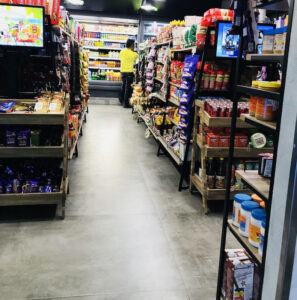 FMCG (WHAT WE EAT, COOK WITH, CLEAN WITH, ETC.)
FMCG (WHAT WE EAT, COOK WITH, CLEAN WITH, ETC.)
Processed foods, fresh foods (fruits, vegetables), dry goods (coffee, tea), beverages, toiletries, personal care products, cleaning and laundry products, stationery, over-the-counter medicines, a range of plastic goods… basically our everyday/frequently used items fall in this category. This also means that at the individual household level these account for one of the largest carbon footprints of all categories of consumption.
As for the FMCG industry, addressing the life-cycle (from sourcing and production to disposal) environmental impact of their products is more than about recyclable packaging. What companies are doing to address their impacts in their manufacturing practices and supply chains is critical – more and more number of consumers want to know about what happens behind the scenes, and if they don’t really care to know, well, they should.
It helps to remember that what happens during production or what raw material is used can have health implications for us, over and above environmental implications. For example, antibiotics injected in chickens can increase human beings’ antibiotic resistance, which poses a serious health risk. Hopefully, you are not one of those who think it’s okay for your laundry products to have chemicals, just because, you know, you don’t eat them. (Look at the bright and good side – using natural cleaners will cost less, it will cut down on the number of toxins you are exposing yourself and the environment to, and it will have a more positive impact on your indoor air quality.) Similarly, you wouldn’t think chemicals in your cosmetics are fine, right? If you knew that some of these chemicals are linked to serious health issues and can be as harmful as the chemicals in your food?
Let us be absolutely clear on this – that we should not let companies make us buy stuff that can be harmful for us or the environment. It is up to us to do background checks, read labels and understand what ingredient is what and how much of which ingredient is too much, demand answers if we think we should know the answers, find solutions and alternatives, and so on. Let companies change tack in accordance with what the growing number of conscious consumers are looking for.
Concerns and priorities
- How much is a given company’s waste to landfill, considering that a lot of packaging waste ends up in landfills? Is it making efforts to develop sustainable packaging?
- What do companies do about packaging after it is used? Do they do anything at all about it? (How about using less packaging, or encouraging consumers to return packaging?)
- FMCG companies rely heavily on water through their supply chains – so how responsible are they in their water use?
- How much is the nutrition value in the food they sell us (for example, nutrition value can be enhanced by cutting down sugar, salt and fat in products)?
- Are companies using alternative, natural, biodegradable, plant-based raw material in products?
- How much plastic am I consuming owing to the packaged things I buy, and what must be the plastic waste in my house? What substitutes or alternatives can I use to reduce plastic going out of my house?
- Know that many of the household, regular things we buy may be from the same FMCG company, with a basket of products and brands in its portfolio. You may want to understand that company’s stand on the environment, transparency, social responsibility and justice, engagement with communities, and so on. The internet has brought this kind of information within reach for consumers and we can share what we know with others.

WHAT WE WEAR
Quick question: What percentage of the clothes in your wardrobe must be not from fast-fashion brands? Put another way, what percentage of the clothes are from brands making clothes sustainably and ethically?
There’s a reason fast fashion is called ‘fast’ – they are produced real fast to reach customers fast. Which means quick turnarounds. A whole lot of quick turnarounds throughout the year is a whole lot of garments out there. We are talking of mass-produced, relatively cheap garments that the brands want people to wear for short periods and discard at the earliest. The result is a huge amount of textile waste. It is estimated that more than half of the fast fashion produced is disposed of in under a year. Worse, before reaching the landfill, that polyester dress has already done much damage by releasing microplastics into the environment. If you thought plastic in the ocean was only from plastic bottles and plastic packets, you’ve got another think coming.
Clothing made from organic, reusable materials can last for years and reduce truckloads of textile waste. Can we convey to retailers and brands our preferences by shifting loyalties to their ‘sustainably produced’ collections, or better still by patronising brands that are wholly sustainable/organic/ethical/responsible/transparent?
Concerns and priorities
- Where are my clothes being made and who is making them – are they being made ethically?
- What fabrics are being used, how are these fabrics being sourced and made, and what is the overall carbon footprint involved?
- Are my clothes made from organic fibres/natural fibres?
- Are my clothes made of fibres that have low water consumption, such as linen and recycled fibres?
- What are the long-term effects of the chemicals in synthetic materials like polyester, rayon and nylon?
- Are the companies I buy from using sustainable fabrics and packaging? (Sustainability can be embedded in each stage – whether it’s cutting of fabric, reusing fabric scraps [to make accessories, for example], using ecofriendly dyes and fabrics, or the packaging.)
- Do the companies I buy from have transparent manufacturing processes? Do they treat their workers well – for example, do they pay them fair wages, or provide decent and safe working conditions?
- What are these companies doing to reduce their carbon footprint (the fashion industry generates at least 5 per cent of global emissions)? Do they, for example, use less water during manufacturing? Are they using harmful chemical dyes and hence are responsible for contaminating the water bodies where the leftover dyes end up going?
WHAT WE PLAY WITH
As much as 90 per cent of toys are made of plastic. Saying that kids are drowning in plastic toys will hardly be an exaggeration. Further, while these things create instant gratification, they also have an extremely short shelf life because, you know, there are so many of these toys. (There is also the tendency of young children to put their toys in the mouth, which is especially alarming if these things contain toxic chemical ingredients.) Also, why just the toys – think of the amount of packaging that these come bundled in, exacerbating the plastic situation.
Mercifully, things are starting to change. Consumers are becoming aware of plastic and its negative impact on their lives, their children’s health, and the environment. And sure enough, companies are taking note of this and announcing their plans to phase out plastic from their products and packaging. Using sustainable materials can and does present a unique challenge, but companies will have to be equal to the challenge and employ their R&D as best as they can towards this goal.
Among other things, if toys are made with materials that biodegrade, a family can compost these themselves or send it out for municipal composting. In fact, hosting or sponsoring free neighbourhood toy exchanges is a great option for manufacturers and retailers, and apart from adding to their sustainability quotient, this will boost their credibility and encourage greater loyalty from consumers.
As consumers, it makes a lot of sense to ask ourselves whether an item is necessary, how often it will be used, and for how long. Some of us tend to simply throw away used toys, which makes one wonder if there was any point to buying these in the first place. Hand-me-downs as a practice is catching up, thankfully, and as a conscious consumer, this is something you should consider and propagate. The market for used toys is expanding and you will find many shops that let you buy and sell used toys.
Concerns and priorities
- Are companies committed to making safe, toxin-free toys?
- Are these companies committed to phasing out plastic packaging on their products?
- What is their stand on reducing energy consumption, water consumption, waste to landfill, and overall greenhouse gas emissions?
- Are companies using – or planning to use – recycled, sustainable materials (e.g., certified, reforested timbers, fabric made from organic materials) and bio-based materials to avoid fossil fuel-based production methods?
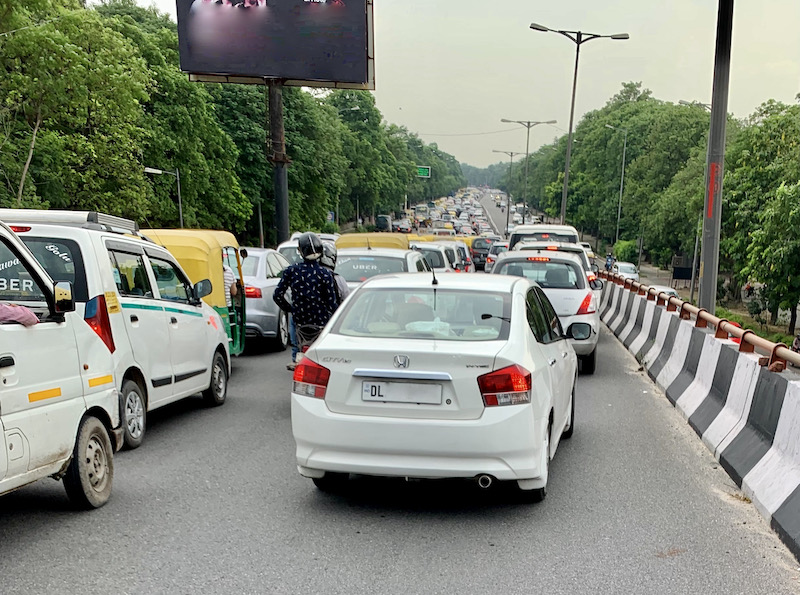 HOW WE COMMUTE/TRAVEL
HOW WE COMMUTE/TRAVEL
If you live in a city with one of the highest air pollution levels in the world and with emissions from vehicles figuring among the major causes for that pollution, you know the drill – which is that each one of us has a role to play in bringing vehicular emissions down by either commuting less or commuting in ways that do less harm (public transport, non-motorised transport, shared transport, using electric or even hybrid vehicles, etc.). To put things in perspective, 60 per cent of road transport emissions come from passenger travel (cars, motorcycles and buses); and the remaining 40 per cent from road freight (lorries and trucks), as per data from International Energy Agency (IEA). A study by IEA also states that growing demand for SUVs was the second largest contributor to the increase in global CO2 emissions from 2010 to 2018, eclipsing all shipping, aviation, heavy industry, and even trucks, as well as offsetting both efficiency improvements in smaller cars and carbon savings from electric vehicles.
The point is that the case for conscious travelling/commuting is strong almost everywhere, for reducing carbon dioxide emissions, congestion and pollution. The impact of long commutes for work on well-being, the stress of rush hours, the scourge of road rage, and suchlike are real problems too.
For evidence, we have the recent lockdowns in cities across the world, one unmissable consequence of which was that emissions fell and the skies cleared. Many cities enjoyed clean air for the first time in decades.
Yet, since lockdowns were only a stopgap measure to arrest a pandemic, what may be a long-term and practical way out of the maze of traffic? Right now, people are taking fewer journeys and assessing the risk/benefit of those they do take much more carefully. Can this then not become the way we go about work, errands and socialising in the future as well? Knowing that even small shifts in the way we commute, or even a small percentage of people making these shifts, can yield big advantages for the environment in terms of emissions, we definitely can be more conscious of our mobility consumption. Think about it.
Concerns and priorities
- What kind of journeys and modes of journeying can we prioritise?
- Due to the preference for private transport in the wake of the pandemic, greater and more concerted efforts will be needed to speed the replacement of internal combustion engine (ICE) personal vehicles with sustainable alternatives such as electric vehicles (EVs) and vehicles that run on alternative fuels like biodiesel.
- The infrastructure for making electric vehicles practical and safe for long journeys needs to be scaled up. Charging infrastructure in particular has to be scaled up, and alongside that, renewable energy capacity as well. Availability of clean, low-carbon and less expensive grids will be key. Storage capabilities of EV batteries constitute another area that can do with an upgrade. Overall, the lifetime cost-effectiveness of EVs for consumers has to come across clearly for them to adopt this new way to commute.
- To persuade people to choose public transport, the system will need to be a reliable one, as in the train or the bus will operate as per schedule, there will be extensive coverage of routes, and so on. The application of technology to make commuting convenient and make real-time information available will go a long, long way towards making public transport a first choice for the majority.
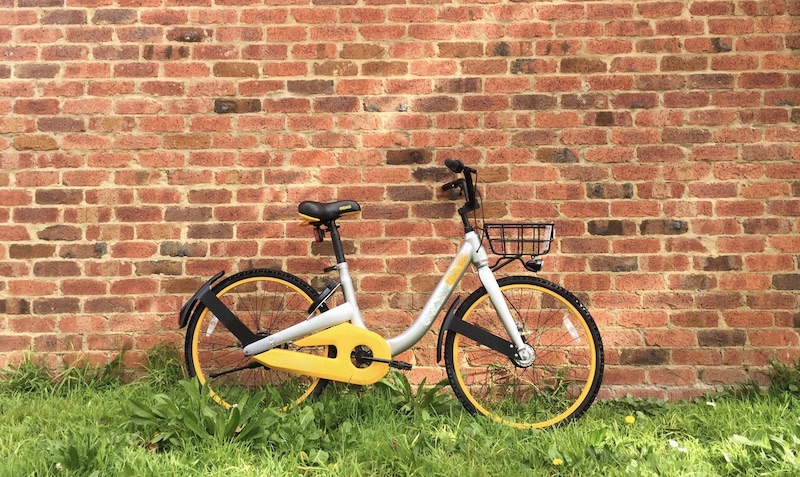 To persuade people to use cycling as a way to commute, our cities and towns will have to become cycling-friendly first. Look to bicycle-friendly cities like Copenhagen for inspiration and ideas – this particular city has about 400 km of cycling lanes. Copenhagen even has a city bicycle policy, with one of the goals being to have 50 per cent of city commuters cycling to work by 2025.
To persuade people to use cycling as a way to commute, our cities and towns will have to become cycling-friendly first. Look to bicycle-friendly cities like Copenhagen for inspiration and ideas – this particular city has about 400 km of cycling lanes. Copenhagen even has a city bicycle policy, with one of the goals being to have 50 per cent of city commuters cycling to work by 2025.- Public transport running on renewable energy sources is an idea whose time has come, and the earlier we embrace this new way to travel, the more secure our future.
Flying is one of the largest individual contributors to climate change. Just one cross-country flight can contribute to a large part of an individual’s annual carbon emissions. The more frequently you fly and the more distance you fly, the higher your carbon emissions. While trains and cars also emit GHGs, they produce much less and consequently leave a smaller footprint. This is especially true when driving a hybrid or electric vehicle.
Yet, if fly you must, is there a way to fly with the most minimal environmental impact possible? Some options: choose direct flights (nearly 25% of aeroplane emissions occur during takeoff and landing, so a bunch of connecting flights is worse than a direct flight), choose an airline with a sustainability commitment, and just fly less.
 HOW WE POWER OUR HOMES
HOW WE POWER OUR HOMES
Here the conscious consumer is actually a smart consumer too, because increasing energy efficiency in your home can end up saving you energy and money both. Buying energy-smart is oftentimes on the high investment side”a deterrent for those with tight budgets, but that cost is recovered and more than compensated for within a few years.
If you are buying a new home, look for a green building with solar heating, sufficient natural light, and provision for rainwater harvesting. And not to forget, install those energy-efficient light fixtures ceiling fans and air conditioners, preferably ones with star ratings denoting energy-efficiency levels. (A significant amount of energy-related greenhouse gas emissions come from heating, cooling, and powering households. Households consume 29% of global energy and contribute to 21% of resultant CO2 emissions, as per data provided by United Nation Environment Programme. Reducing your home energy use is the single most effective way to save money and reduce your home’s contribution to climate change.)
Remember that one can change many things to increase energy efficiency with little or no effort or cost. Also, changing old habits can make a lot of difference – for example, turning lights off as you leave a room, unplugging electronic appliances when not in use, regularly cleaning or replacing old filters, washing clothes in cold water, using shorter cycles on the washing machine, etc.
So, yes, if we are creatures of habits, it’s time we broke some and adopted a few new good ones.
Concerns and priorities
- Even with adequate knowledge of how to save energy and a professed desire to do so, many consumers fall short of taking practical steps towards energy efficiency and conservation. Simply put, knowing does not necessarily translate into action.
- There is a tendency to avoid actions that are costly in the short term (time and money needed to purchase energy-efficient appliances), despite these offering long-term benefits (reduced electricity bills).
-The initial installation costs remain a deterrent for many. - There is need to provide more information (awareness about multiple benefits of energy-efficient homes) and more options (more choices) to consumers. Incentivising household adoption of energy-saving technologies can spur more people into action.
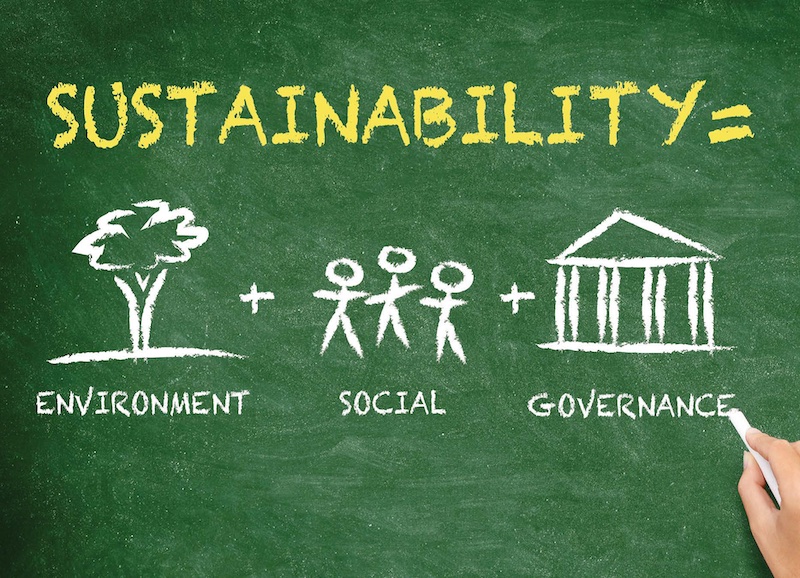 WHO WE BANK WITH AND WHERE WE INVEST
WHO WE BANK WITH AND WHERE WE INVEST
While traditional investing is all about the bottom line (that is, what is going to yield the highest value), socially responsible investing (SRI), or impact investing, takes environmental, social and governance (ESG) aspects into account even as it seeks to make you money.
As a conscious consumer, you have the right to invest in companies that you believe bring a positive change, whether because they have a diverse workforce or they are addressing environmental issues, such as through clean energy solutions, and suchlike. So, for example, you may prefer to invest in a renewable energy firm instead of one that has a fossil fuels business. To put it straight, you don’t want your money in big bank accounts and investments to be used to fund projects that harm the planet.
Socially responsible banks ensure that the money deposited into your bank account gets invested in an ethical way. For example, these banks use funds from individuals’ savings to finance business or charities that benefit society and the environment. It is also worthwhile to know more about your bank’s own sustainability practices, be it their CSR activities or their carbon footprint mitigation.
Concerns and priorities
- You may be depositing and investing your money in ways that are not consistent with your views on the environment and society.
- One of the major obstacles for consumers who want to spend their money responsibly is not knowing where to find socially responsible products.
- A company may present a ‘green’ public image that is at variance with its actual policies, practices and products. Here, green fintech companies can play an important role. Also, there are certifications that can help you with knowing where companies stand with regard to ESG standards.
- A bank may declare its sustainability commitment on, say, its website but be investing in businesses that are guilty of deforestation or drilling for oil.
- There is need for a higher level of financial literacy and awareness of how ethical and environmental issues can be addressed through financial products.
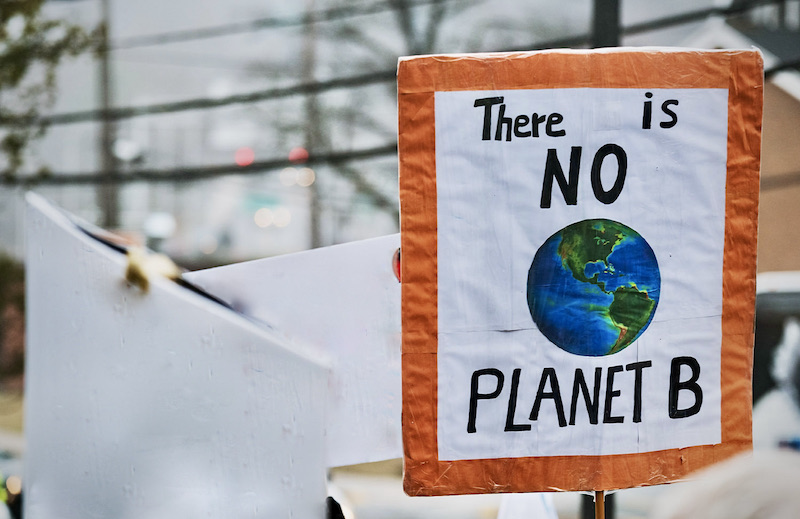 There are many other facets to our consumption habits and patterns, but if we can sort out even half of the things mentioned above, we would have done a good bit towards conserving, preserving, caring for, and loving our planet. There is no other planet vying for our attention and care, so let’s give this one our very best, shall we?
There are many other facets to our consumption habits and patterns, but if we can sort out even half of the things mentioned above, we would have done a good bit towards conserving, preserving, caring for, and loving our planet. There is no other planet vying for our attention and care, so let’s give this one our very best, shall we?
Things worth thinking about
- Conscious consumption is about consuming and buying mindfully, being conscious of our choices and choosing to buy from companies who consider the ethical, sustainable and environmental impacts in their manufacturing practices, supply chain and business model.
- We should want to know what companies put into their products and how they are sourced.
- Look out for products with third-party certifications – these are based on rigorous standards for environmental and social responsibility.
- To buy something that will last for many years is sustainable. It is the opposite of the ‘use and throw away’ mindset that we may not even be aware of having nurtured all these years without a second thought. Essentially it’s about buying less and buying better.
- Conscious consumption is about thinking about the long-term value, happiness and meaning of the products we buy. Starting to pay attention to the products in our lives is a gradual process – take your time figuring out what is what and how to make best use of, and subsequently dispose of, the stuff that is not all good.
- It takes time, effort and a degree of determination to research companies and products that align with our views. While we value positive social change and sustainable products, we also value convenience and affordability. So, yes, there’s a bit of push and pull between what we consider to be the ideal way and what is convenient in the daily scheme of things. Let’s just remember that it’s not an ‘all or nothing’ deal. Small steps to begin with will eventually add up.
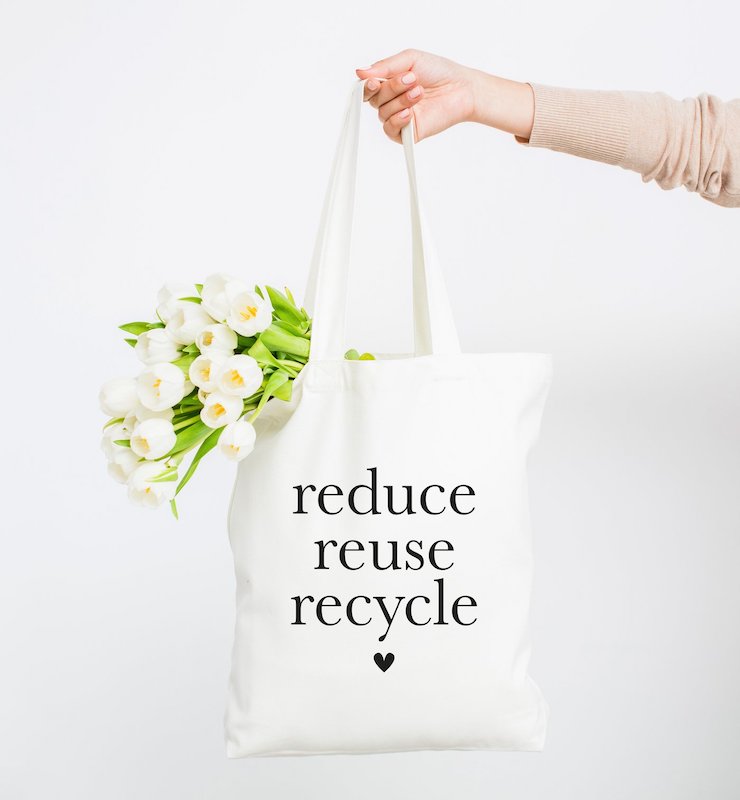
- A common deterrent is the belief that buying organic or sustainable stuff costs more, and in many cases that is so. But think this way: it may be more expensive at first, but as you begin to replace single-use products with reusable or long-lasting counterparts, the accumulated value more than compensates. And it does the planet much less harm. (Another example: Organic food typically costs more but it also gives more nutritional value, in addition to reducing public health risks to farm workers, their families, and consumers by minimising their exposure to chemicals on the farm and in food. So, not only do we save on medical expenses by reducing health risks associated with chemicals, we also reduce the costs to the environment.)
- This planet, our one and only planet, cannot support continued current rates of consumption.
- Companies that help consumers reduce waste, become more sustainable, and understand aspects like labelling information or traceability of ingredients should be our first, if not only, preference.
- As consumers, we should care about how companies treat their workers and farmers. After all, will I buy from a company and directly or indirectly support it financially if I don’t support it ethically or socially?
- Ask yourself: can my individual actions make a difference? Many of us asking the same question will make all the difference!
- Last but not the least, what is my ecological footprint – simply put, how fast do I consume resources and generate waste compared to how fast the planet can recover from the same?
And yes, there’s the dichotomy of access to sustainable products, because in many cases these are relatively expensive. For this, the hope is that as more consumers demand ethical, organic and Fair Trade products, the more their production and availability will be, and the cheaper they will become, which will make them more accessible to more consumers. There is no doubt that many, many more people will embrace a sustainable lifestyle, consuming consciously, if they can overcome the belief that it is the more difficult way to be.
